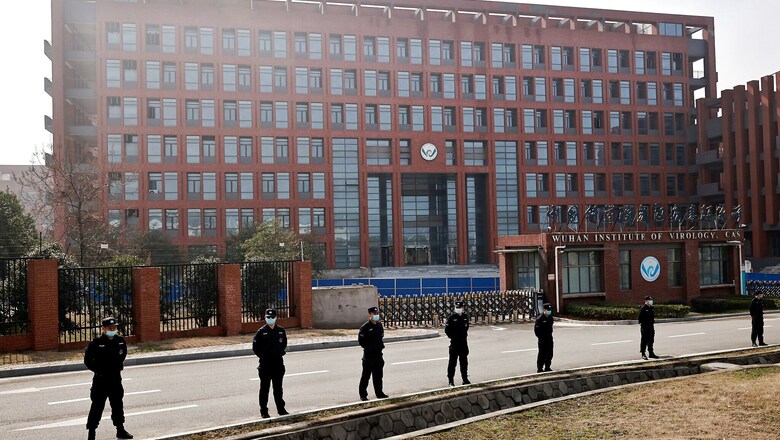
views
Google search, Twitter, Google translate. These may not be the investigative tools one has in mind when out to unravel what can be called the mystery of the decade, if not the century. But these are the aids that a crack team of amateur researchers relied on to amass evidence that has now compelled media and intelligence communities around the world to sit up and take notice of the hypothesis that the novel coronavirus may have emerged from a lab in China. Not conclusive proof, but what these internet sleuths have managed to put together is a strong argument, based on research, that there has to be a proper effort to get to the bottom of the Covid-19 pandemic saga.
What IS DRASTIC?
Short for Decentralized Radical Autonomous Search Team Investigating Covid-19, it is an informal amalgam of experts and lay researchers from across the world who painstakingly pieced together various strands of data and information to understand how Sars-CoV-2, or the novel coronavirus, emerged and raced through the globe.
The website that this group has now launched, drasticresearch.org, says that the team comprises more than 20 people from across the world, including few members from India. Many of these amateur sleuths have chosen to remain anonymous, like the one who describes himself as the ?Seeker?. In fact, the website adds that ?many D.R.A.S.T.I.C. Members, especially “China Experts” and scientists prefer to operate anonymously due to privacy, security and professional concerns, and are thus not listed on this page.?
The group coalesced on Twitter as they looked out for users who were sharing findings and inputs that supported the lab leak hypothesis. Sometimes, a small hint buried in asome report would prompt focused digging that would throw up exciting evidence. That is how Pune-based researchers Monali Rahalkar and Rahul Bahulikar say they ?discover(ed) the link between a copper mine and the nearest relative of the virus?. The science couple, trained in genetic and biological research, had seen a passing mention in a journal of a bat coronavirus that was said to be the closest relative of Sars-CoV-2. They decided to look for more details and managed to trace it to caves in China?s Yunnan province.
The couple published a research paper on their findings and, soon, were contacted by the Seeker to pitch in to DRASTIC?s work.
Although reluctant to reveal his identity, the Seeker, who uses the handle @TheSeeker268 on Twitter, has told media outlets that he is based in eastern India and has taught science and dabbled in architecture, painting and filmmaking. Among the members listed by DRASTIC are a microbiologist from the University of Innsbruck named Rossana Segreto and Yuri Deigin, a Canadian biotech researcher and entrepreneur.
What Has DRASTIC Found?
According to a story on Newsweek, it is due to the work by DRASTIC that there is more insight into research that the secretive Wuhan Institute of Virology (WIV) was doing. For instance, while Shi Zhengli, a key researcher at WIV who is known as China?s ?bat woman?, had shared that the closest known relative of Sars-CoV-2 was RaTG13, another bat coronavirus, it was work by DRASTIC that showed that RaTG13 had come from caves in China?s Yunnan where some miners had contracted a mystery disease in 2012.
A central focus of DRASTIC?s amateur sleuths was to use their OSINT, or open source intelligence, skills to obtain information on what type of work the Wuhan lab was exactly doing. Using Google Translate and every possible keyword combinations and permutations possible, the Seeker found out thesis documents linking the lab to research with the RaTG13 coronavirus. DRASTIC also found that while WIV had labs that met the highest biosafety certifications (BSL4), not all research at the facility was being conducted according to stringent protocols.
So, Did Covid-19 Jump Out From A Lab?
It has to be remembered that the members of DRASTIC are mostly armchair sleuths who are devoting considerable time and internet resources to pursue a hypothesis that was dismissed off-hand by the mainstream scientific community and investigators. Further, this is a team that came together online and does all its collaboration from remote locations using basic tools. For them to find the trove of information and evidence that they have done, many experts agree, is remarkable in itself.
While their research may not have thrown up conclusive evidence that nails the true cause of how the novel coronavirus emerged, it definitely has prompted a rethink among the global scientific community on the origin of the virus that has taken a severe human and economic toll across the globe. The call from US President Joe Biden that efforts should be redoubled to find out how the pandemic broke would come as vindication for DRASTIC?s motley crew of amateur sleuths. But there may not be any substitute for pointed on-site investigation and a detailed probe for finding the truth behind the matter. However, a tight-lipped China that desists from fully cooperating with international investigators ? as was shown during the visit by a World Health Organisation (WHO) probe team ? can be a stumbling block as can be a tendency to scoff at the lab leak hypothesis as a conspiracy theory.
Read all the Latest News, Breaking News and Coronavirus News here.

















Comments
0 comment